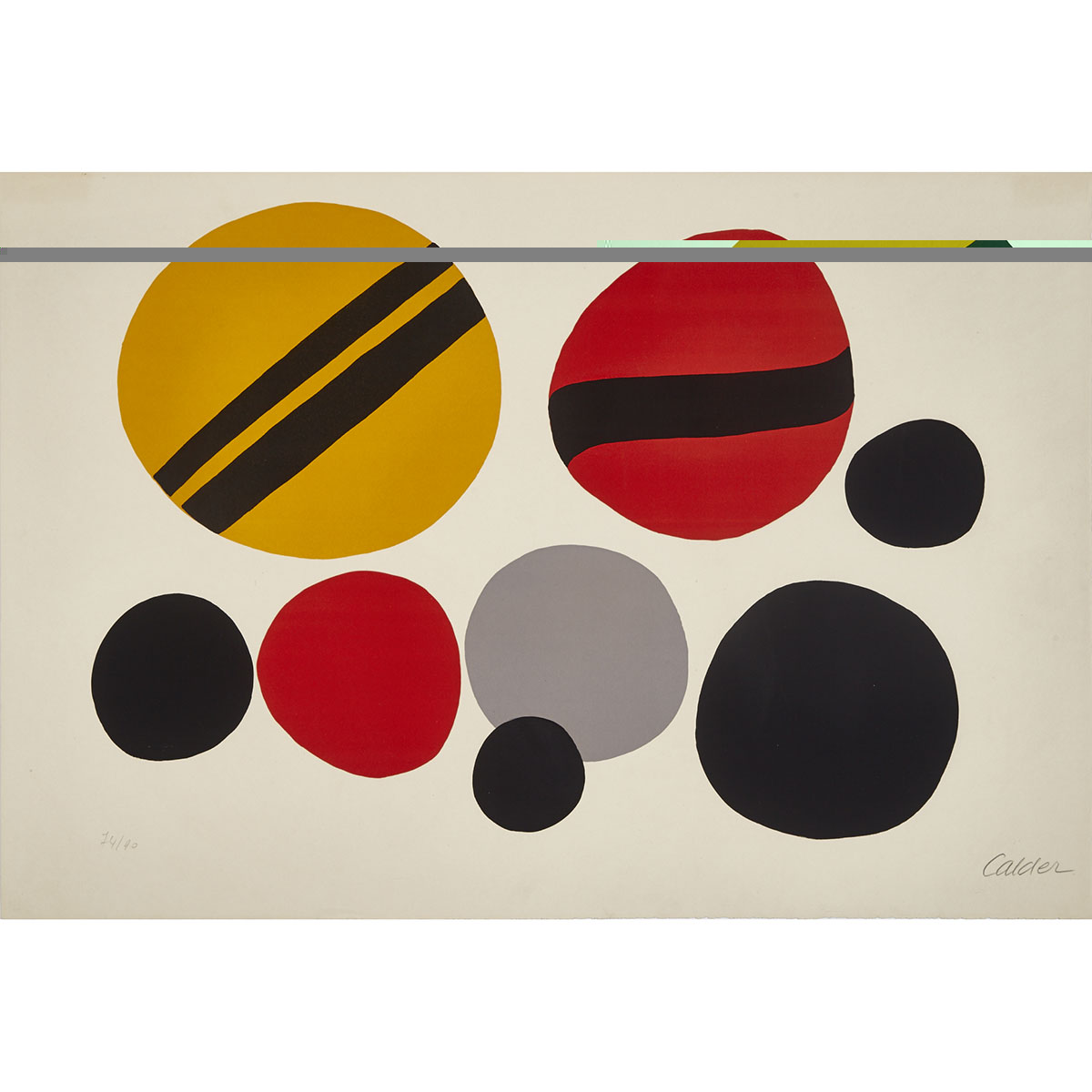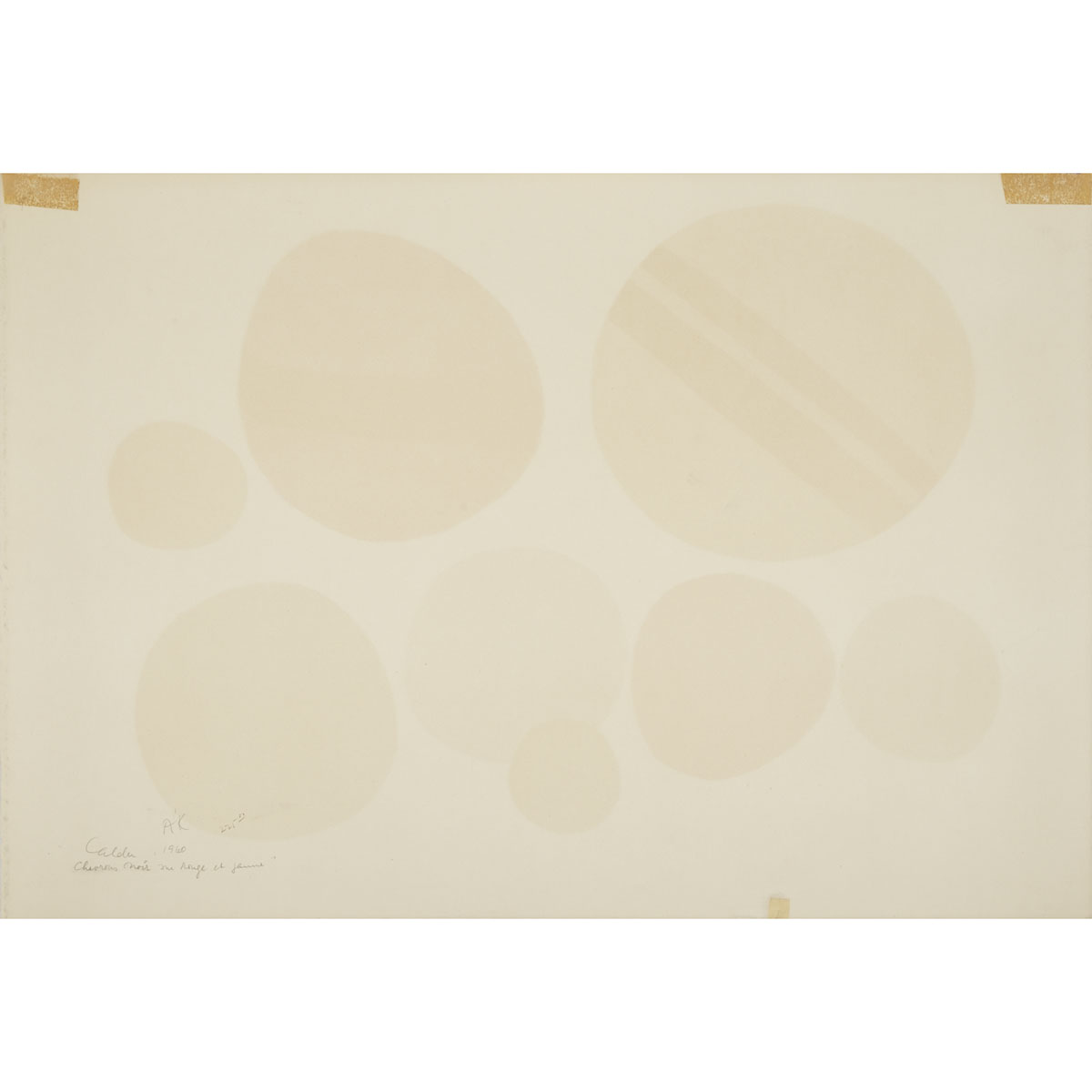Lot 64
Alexander Calder (1898-1976)

Lot 64 Details
Alexander Calder (1898-1976), American
CHEVRONS NOIR SUR ROUGE ET JAUNE, 1966
Colour lithograph on BFK Rives watermarked paper; signed and numbered 74/90 in pencil to margin, inscribed “Calder”, titled “Chevrons Noir sur Rouge et Jaune” and erroneously dated 1960 in pencil verso and to the Art Gallery of Ontario label verso. Published by Maeght, Paris, FR.
26" x 38" — 66 x 96.5 cm.
Estimate $1,500-$2,500
Additional Images

Provenance:
Mazelow Gallery, Toronto;
Art Gallery of Ontario, Toronto Art Rental Service while with the Mazelow Gallery, Toronto;
Acquired from the above by the present Private Collection, Toronto in 1976
Literature:
Alexander Calder, What Abstract Art Means to Me from Museum of Modern Art Bulletin 18, no. 3, Spring 1951, p. 8–9
Note:
In 1930, Calder visited the studio of Piet Mondrian where Calder was taken by the rectangles of colour tacked to Mondrian’s studio wall. Calder commented of meeting Mondrian, “I think at that time and practically ever since, the underlying sense of form in my work has been the system of the Universe, or part there of.” (1951, p. 8)
This visit had a profound effect on the American artist; Calder sought to replicate the underlying structure of the universe using forms and colours he viewed as essential. Calder’s development of his own brand of abstraction saw the American artist generally using primary and secondary colours in conjunction with black and white for his works, as we see in this print as well as Lot 3. In these works, detached bodies of primary and secondary colours and shapes float freely or overlap to impinge upon one another to produce a unique sensation of movement on a white ground.
In an interview with Katherine Kuh, Calder commented, “The simplest forms in the universe are the sphere and the circle. I represent them by disks and then I vary them. My whole theory about art is the disparity that exists between form, masses movements. Even my triangles are spheres” (1962, p. 38)
Calder’s lithographs convey reductive geometry that free float in a balanced and immutable stasis. They defy the traditional easel paintings sense of up or down and seem to exist somewhere between the painting and the organic. The mechanical shading of the lithograph makes the shapes impregnable and helps to create a complex environment that is inhabited by primitive forms of basic colours that explores the movement of forms and the relationship of ‘figure’ to ‘ground.’





